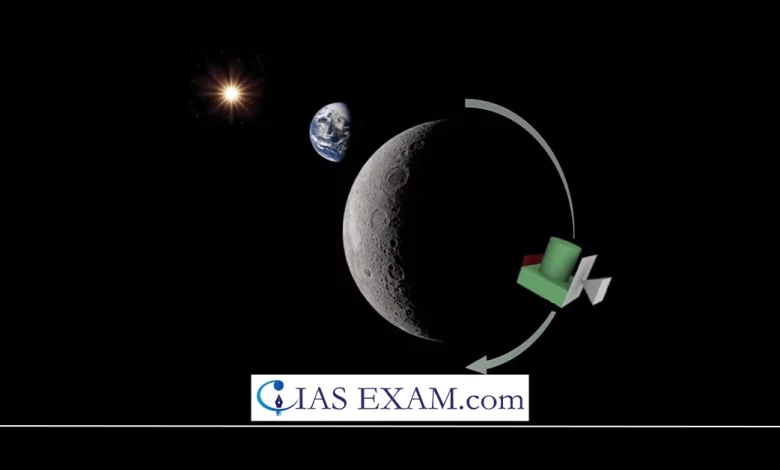
Context
Astronomers are excited about placing advanced telescopes on the moon and in its orbit, including an Indian telescope called PRATUSH.
About PRATUSH
- PRATUSH, a radiometer being built by the Raman Research Institute in collaboration with ISRO, will be placed in lunar orbit to study the Cosmic Dawn of the Universe.
- Despite the challenges of radio frequency interference in Earth orbit, PRATUSH will benefit from operating in free space and having a minimal impact from the ionosphere.
- In lunar orbit, PRATUSH will have optimal observing conditions with minimal interference and no ionosphere.
- The instrument will include an antenna, receiver, and correlator to detect radio noise in the significant signal from the Dark Ages.
- Objectives: The primary goal of PRATUSH is to measure the low-frequency radio sky-spectrum over 40 to 200 MHz. This will help in understanding the Cosmic Dawn when the first stars and galaxies formed, and the subsequent Epoch of Reionization when these first sources of light re-ionized the universe
- Design and Operation: PRATUSH is planned to orbit the Moon, utilising the radio-quiet region on the far side to make scientific observations. The data collected will be transmitted back to Earth when the satellite is on the near-side of the Moon. The experiment is currently in the pre-project studies phase Scientific.
- Significance: The experiment aims to shed light on the Dark Ages following the epoch of recombination and the Cosmic Dawn that followed. It will explore the nature of the first sources of radiation and the physics of the re-ionization process.
- Challenges and Development: PRATUSH faces common challenges in detecting the CD/EoR signal, such as the highly sensitive nature of the measurement. It is designed to operate as a solo experiment with a dedicated spacecraft. A concept model is under development, which will lead to the engineering model and eventually the flight model, subject to mission approval.
Earth-based Telescopes
- Earth-based telescopes, such as optical and radio telescopes, encounter challenges caused by atmospheric interference.
- Pollution affects optical telescopes, while radio telescopes are hindered by electromagnetic interference from sources like communication signals.
- Additionally, the earth’s ionosphere blocks radio waves originating from outer space.
Advantages of placing telescope on Moon
Placing telescopes on the Moon has several benefits for astronomical research.
- The far side of the Moon is shielded from Earth’s radio signals, providing a quiet environment for studying faint cosmic signals.
- The Moon’s lack of atmosphere allows for clear and detailed images of celestial objects.
- The extended lunar night offers prolonged periods of darkness for observations, particularly beneficial for infrared astronomy.
- The Moon also allows for the detection of radio waves with longer wavelengths that are blocked on Earth.
- Additionally, the cold traps in shadowed lunar craters provide ideal conditions for infrared telescopes to capture high-quality images.
- These advantages make the Moon an appealing location for future astronomical facilities and could greatly expand our understanding of the universe.
Conclusion
PRATUSH represents a significant step in cosmology, potentially revealing the history of our infant Universe as it transformed after the Big Bang. It will inform us about the first rays of the first suns in the infant universe.
Source: The Hindu
UPSC Mains Practice Question
Q.Explain the function and components of a reflecting telescope, and compare it to a refracting telescope. Discuss the advantages and disadvantages of each design.





.png)



